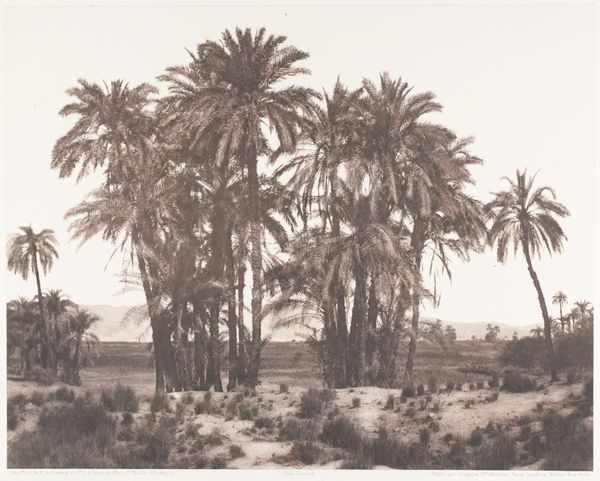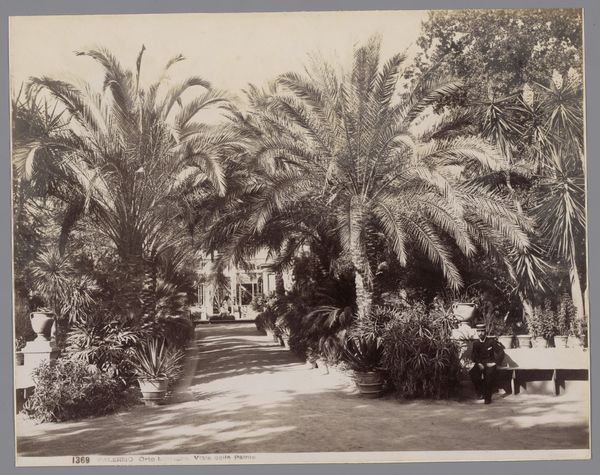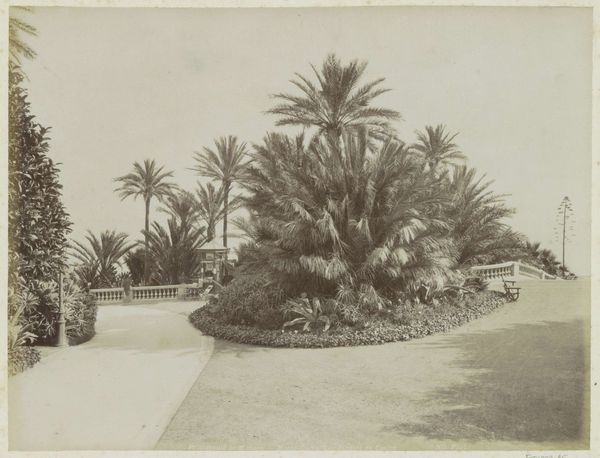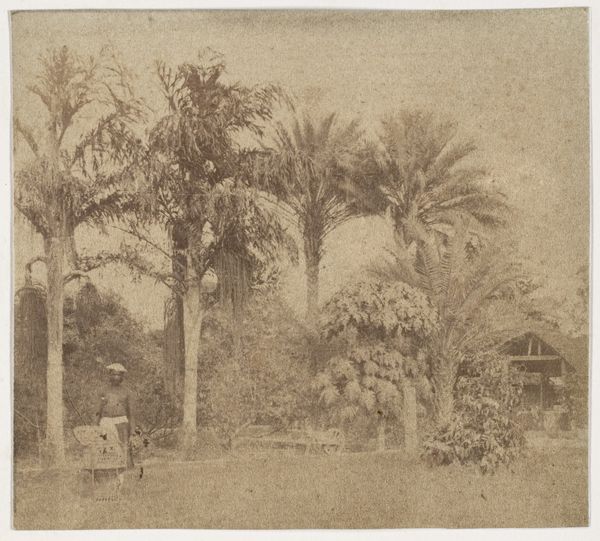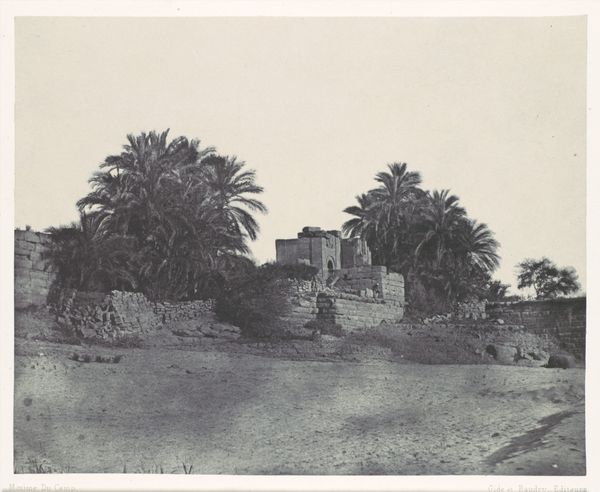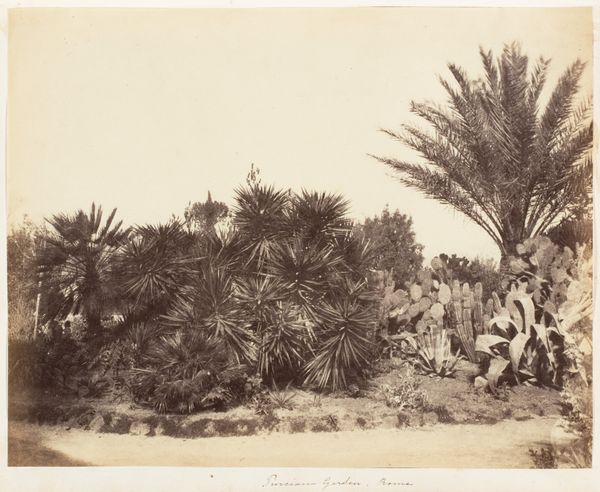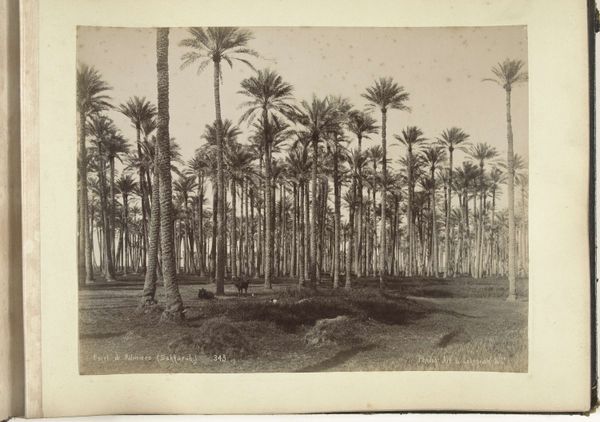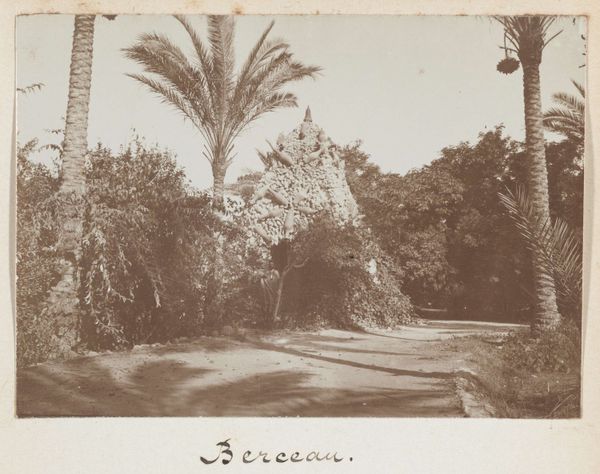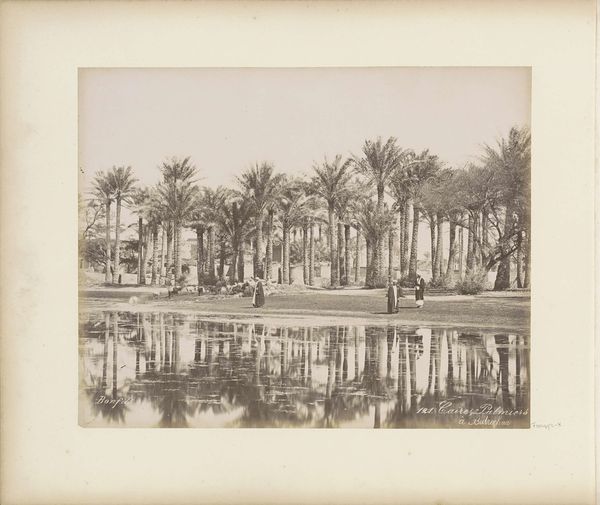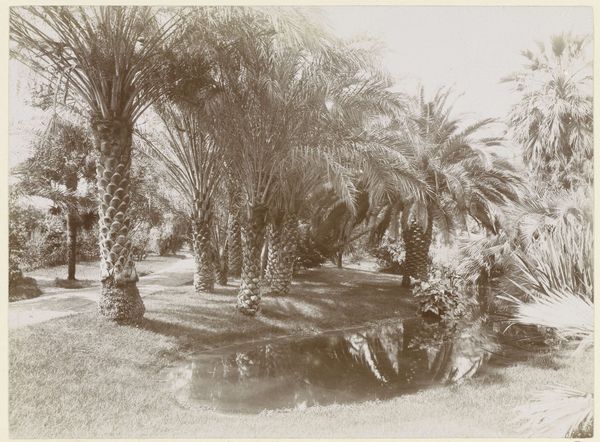
photography
#
landscape
#
photography
#
orientalism
Dimensions: height 79 mm, width 108 mm
Copyright: Rijks Museum: Open Domain
Editor: We're looking at a photograph called "Palmentuin van een buitenverblijf in Alexandrië," taken in 1898 by Johannes Lodewijk Heldring. The sepia tones lend a vintage feel, but I’m curious about the deliberate arrangement of palm trees. What can you tell me about this work? Curator: This image is quite revealing when viewed through a socio-historical lens. The title indicates we're seeing the palm garden of a suburban residence in Alexandria. Consider this within the context of late 19th-century European Orientalism. How do you think the image might speak to European power dynamics at the time? Editor: I guess it’s showing a kind of European ownership or even taming of an "exotic" landscape. It's not just a depiction; it feels like a claim. Curator: Exactly. The photograph serves as visual documentation of the colonizer’s space, almost like a trophy. Notice the meticulous rows of palm trees and the clear division of space. This organized presentation contrasts with a potentially wilder "native" landscape. What do you think the act of photographing such scenes did to its broader appeal? Editor: I see. So, circulating these images likely reinforced colonial narratives and promoted tourism or further investment in these spaces? Curator: Precisely. These images weren't merely aesthetic; they were tools that legitimized and normalized colonial expansion, influencing European perceptions of the "Orient". Also notice how absent of any local community it seems. What’s your takeaway now? Editor: I hadn't considered the photo's role in shaping a political narrative. Now I see that seemingly simple landscape images were, in reality, involved with complex power dynamics. Thanks, that's eye-opening! Curator: Indeed! This single photograph reminds us that art never exists in a vacuum and it can subtly define social status and power structures in history.
Comments
No comments
Be the first to comment and join the conversation on the ultimate creative platform.
